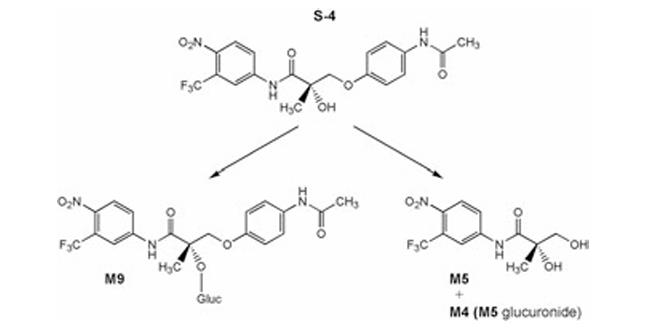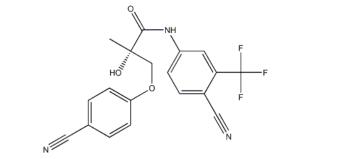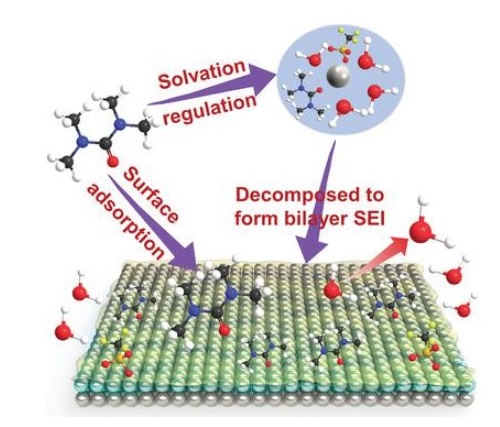Andarine:a selective androgen receptor modulator
Introduction
Andarine, also known as S-4 [Andarine, S3-(4-acetylamino-phenoxy)-2-hydroxy-2-methyl-N-(4-nitro-3-trifluoromethyl-phenyl)-propionamide], is a selective androgen receptor modulator (SARM). It was developed by GTx Inc. with the intention of treating conditions such as muscle wasting, osteoporosis, and benign prostatic hypertrophy. However, it has also gained popularity in the fitness and bodybuilding communities for its potential to enhance muscle mass and strength. Selective androgen receptor modulators (SARMs) are a relatively new class of non-steroidal compounds that possess potent ana bolic activity. They were developed following the identification of androgen receptor antagonists such as bicalutamine in 1998, as an alternative to anabolic steroids for treating a wide range of clinical conditions including cancer cachexia, muscle wasting, osteoporosis, androgen deficiency, and prostate cancer2.
Application
Andarine (S4) is primarily researched for its potential applications in the medical field, specifically for conditions related to muscle wasting, osteoporosis, and benign prostatic hypertrophy. However, it has gained attention in the fitness and bodybuilding communities due to its alleged ability to promote muscle growth and strength. In medical research, Andarine is being investigated for the following potential applications:
1.Muscle Wasting: SARMs, including Andarine, have been studied for their potential in preventing and treating muscle wasting conditions. This could be relevant for individuals with certain diseases or conditions that lead to muscle loss.
2.Osteoporosis: Andarine may have an impact on bone density and could be explored as a treatment for osteoporosis, a condition characterized by weakened and porous bones.
3.Benign Prostatic Hypertrophy (BPH): Andarine's effects on androgen receptors might be relevant in the context of benign prostatic hypertrophy, a condition where the prostate gland enlarges, potentially causing urinary issues.
4. Pancreatic cancer (PC): PC continues to be devastating due to its highly malignant nature and poor prognosis. The limited benefits of the chemotherapeutic drugs and increasing resistance pose a critical challenge overcome and warrant investigations for new therapeutic agents. Several preclinical and clinical studies have suggested a possible role of the androgen receptor (AR) signaling pathway in PC development and progression. Nevertheless, the studies are limited and inconclusive in explaining the molecular link between AR signaling and PC. Selective androgen receptor modulators (SARMs) are small molecule drugs with high affinity for the androgen receptor. SARMs elicit selective anabolic activities while abrogating undesired androgenic side effects. There is no study focusing on the utility of SARMs as inhibitors of PC. Here, we report the first study evaluating the possible anti-carcinogenic influences of andarine, amember of the SARMs, on PC. The data we presented here has illustrated that andarine repressed PC cell growth and proliferation via cell cycle arrest at G0/G1 phase. Gene expression analysis revealed that it downregulates CDKN1A expression level accordingly. Furthermore, we established that the anti carcinogenic activity of andarine is not mediated by the PI3K/AKT/mTOR signaling pathway, a crucial regulator of cell survival. The findingssuggest that andarine might be considered as a prospective drug for PC1.
Synthesis
There is few information on the synthetic pathway of Andarine (S4) or any other specific compound.
Safety
SARMs like Andarine work by selectively binding to androgen receptors in the body, specifically in muscle and bone tissues. This selective binding is thought to reduce the potential for side effects commonly associated with traditional anabolic steroids, which may affect other tissues like the liver or prostate. It's important to note that the use of SARMs, including Andarine, for performance enhancement is controversial, and their safety and long-term effects are not well-established. Some concerns have been raised about their potential impact on hormonal balance and other health risks. As a result, the World Anti-Doping Agency (WADA) has banned SARMs in sports, and their use may be prohibited in various competitive settings1,2.
SARMs, including Andarine, are a heterogeneous group of compounds that are usually classified based on core structures such as aryl propionamide, quinolinone, tetrahydroquinoline, bicyclic hydantoin, and numerous others. SARMs have high muscle and bone tissue selectivity and are not substrates for a-reductase and aromatase enzymes. This results in less androgenic and estrogenic effects compared to anabolic steroids. Indeed, preclinical animal studies have demonstrated that SARMs can prevent bone loss and reduce body fat with fewer undesirable anabolic steroid side-effects. Although none of the SARMs have been approved for human use, a limited number have completed or are currently being evaluated in multicentre clinical trials. Andarine a member of the arylpropionamide class of SARMs was evaluated in a phase I clinical trial, but the study had to be stopped due to adverse side-effects involving visual disturbances. S-22 (OstarineW, GTx-024, enobosarm), another SARM in this class, is currently undergoing phase III clinical trials in patients with non-small lung cancer. The metabolism of S-4 produces a variety of glucuronide and sulfate conjugates that can be detected in urine. Since both the screening and confirmatory procedures we used to detect S-4 incorporate an enzymatic hydrolysis step, urinary metabolites conjugated to glucuronic acid such as M9 [(S)-3-(4-acetylamino-phenoxy)-2-methyl-N-(4-nitro-3-trifluoromethyl-phenyl)-propionamid 2-yl-b-D-glucuronide] and M4 would become de-conjugated and detected as S-4 and M5, respectively3 (Figure 1).

Figure 1. Partial metabolism of S-4 to M9 (S-4 glucuronide), M5 and M4 (M5 glucuronide).
Reference
1. B?lük A, Yavuz M, Takanlou MS, Avc? ?B, Demircan T. In vitro anti-carcinogenic effect of andarine as a selective androgen receptor modulator on MIA-PaCa-2 cells by decreased proliferation and cell-cycle arrest at G0/G1 phase. Biochem Biophys Res Commun. 2023 Sep 3;671:132-139..
2. Starcevic B, Ahrens BD, Butch AW. Detection of the selective androgen receptor modulator S-4 (Andarine) in a doping control sample. Drug Test Anal. 2013 May;5(5):377-9.
3. Narayanan R, Mohler ML, Bohl CE, Miller DD, Dalton JT. Selective androgen receptor modulators in preclinical and clinical development. Nucl Recept Signal. 2008;6:e010.
You may like
Related articles And Qustion
See also
Lastest Price from Andarine manufacturers

US $0.00/box2025-09-26
- CAS:
- 401900-40-1
- Min. Order:
- 1box
- Purity:
- 0.99
- Supply Ability:
- 10tons

US $10.00/box2025-08-26
- CAS:
- 401900-40-1
- Min. Order:
- 1box
- Purity:
- 99%
- Supply Ability:
- 100000box



